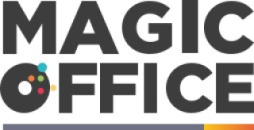
Understanding the core functions of a project management office
Defining the essential functions of a pmo
The role of a project management office (PMO) has grown exponentially and become vital in ensuring successful project outcomes. At its core, a PMO is designed to standardize project management practices and facilitate the sharing of resources, methodologies, and tools within an organization.
According to the Project Management Institute (PMI), organizations with PMOs report 38% higher project success rates. This highlights the crucial impact of having a dedicated office responsible for overseeing projects.
Standardizing project management practices
One of the primary functions of a PMO is to establish and enforce standard methodologies. Consistency in practices ensures that all project managers follow the same guidelines, which leads to more predictable and repeatable project outcomes.
PMP and MSP are commonly used frameworks within PMOs, demonstrating a set standard of practices and processes for project management. A survey by Statista revealed that 61% of companies use a standard project management approach, underscoring the importance of uniformity in project execution.
Facilitating resource allocation and prioritization
Effective resource management is another key function of a PMO. By overseeing resources across multiple projects, the PMO ensures that resources are allocated efficiently, reducing bottlenecks and improving overall project flow.
An example of efficient resource allocation can be drawn from Microsoft Project software, which allows real-time resource scheduling and assignment, making it easier for project managers to manage their teams effectively.
Monitoring and reporting project performance
Tracking project performance against pre-defined metrics is another essential function. PMOs provide regular updates and reports to stakeholders, enabling informed decision-making. They typically employ project management software tools like Salesforce to track progress and generate comprehensive reports.
A case study from Brave Folk demonstrated how implementing PMO software led to a 25% improvement in project delivery times, showcasing the tangible benefits of performance monitoring.
Enhancing strategic alignment
Aligning projects with the organization’s strategic goals is a critical function of a PMO. This ensures that resources and efforts are focused on projects that provide the most business value. The concept of a Portfolio Management Office (PMO) comes into play here, focusing on strategic project alignment.
An article by Aprika Business Solutions Ltd highlights that organizations with effective portfolio management capabilities are 17% more likely to realize project benefits, emphasizing the strategic role of PMOs.
Key roles and responsibilities within a PMO
Roles within a successful pmo
Let's dive right into the heart of what makes a project management office tick - the people. A PMO is not just a set of processes; it's a dynamic team filled with diverse and crucial roles that ensure the smooth running of projects across an organization. Each role is distinctly crafted to handle specific aspects of project management, resource allocation, and strategic planning, ensuring that every project is a success story waiting to be told.
The project manager
The project manager is essentially the captain of the ship. They are responsible for planning, executing, and closing projects while managing the team's deliverables within the set timeline and budget. According to the Project Management Institute, organizations with standardized project management practices see a 28% increase in successful project outcomes. Project managers play a pivotal role in ensuring projects are aligned with business goals and deliverables are met efficiently.
The pmo manager
Next, we have the PMO Manager, whose role is more about oversight and coordination of the PMO's activities. They ensure that project managers have the necessary resources and tools, monitor progress, and report back to senior management. According to a study by PM Solutions Research, nearly 68% of companies with an established PMO see an improvement in project efficiency and success rates.
Resource manager
Then, there's the Resource Manager, a key player who ensures that the project teams are well-staffed and that resources are allocated appropriately across projects. Efficient resource management can lead to a 33% increase in project delivery efficiency, as per a survey by the Resource Management Institute. Their role involves solving resource conflicts and balancing the needs of various projects to optimize productivity.
Portfolio manager
Another important role within a PMO is the Portfolio Manager, who oversees the selection, prioritization, and management of projects to ensure they align with the organization's strategic objectives. This role is vital for ensuring that the right projects are pursued and resources are used effectively. Statista's research highlights that organizations practicing effective portfolio management see a 20% improvement in achieving business goals through projects.
Strategic planning and process consultant
Lastly, we can't forget the Strategic Planning and Process Consultant. This expert focuses on guiding the PMO in aligning projects with the company's strategic goals and refining processes for optimal efficiency. Their insights are often informed by industry standards and best practices, providing the PMO with a framework for constant improvement. They play a crucial role in integrating lessons learned to refine project delivery methodologies continually.
Team members: the unsung heroes
Lastly, each project team member forms the backbone of any PMO. From analysts to coordinators, each individual's contribution is significant in ensuring the project meets its goals. They are the unsung heroes who execute the plans and strategies devised by the PMO leadership.
Understanding these roles and their interplay is essential for any organization aiming to optimize its project management office. By clearly defining roles and responsibilities, PMOs can drive projects to success more efficiently.
The importance of resource management in a PMO
Maximizing efficiency through effective resource planning
When it comes to the success of any project management office (PMO), the management of resources is a critical component. Effective resource management provides a solid foundation for achieving project objectives and ensuring timely delivery.
According to a study by Project Management Institute (PMI), organizations that put strong emphasis on resource management are 33% more likely to deliver projects successfully. This underscores the importance of allocating resources effectively and efficiently in line with the PMO's strategic goals.
Balancing resources for multiple projects
A key challenge for PMOs is the management of resources across multiple projects simultaneously. Ensuring that the right resources are available at the right time is crucial. PMO managers need to consistently monitor resource availability, skill sets, and project requirements.
An example of effective resource management can be seen at Aprika Business Solutions Ltd. Their tool, Mission Control, offers a comprehensive project management software solution. It allows PMOs to allocate resources, track availability, and plan for future demands, ensuring no project suffers from resource shortages.
Optimizing human resources
Resource management isn't just about managing tools and timelines. It's also about optimizing human resources. According to Statista, 50% of projects fail due to poor resource management, often linked to human factors such as overwork or skill mismatches.
One strategy is to engage in continuous training and development. By investing in upskilling and reskilling team members, PMO project managers can ensure their teams are well-prepared to tackle various project demands. A case in point is Microsoft's adaptation of their project teams for rolling out new features. They maintain a steady training regimen for their teams to stay updated with the latest project management methodologies.
Using technology for resource tracking
Technological advancements have made resource tracking more efficient. Tools like Microsoft Project help PMOs monitor and manage resources in real-time. These tools can provide insights into resource utilization, helping managers make informed decisions about resource allocation and reallocation.
PMO software solutions, like those offered by Mission Control HQ, include features for resource forecasting and capacity planning, which are crucial for avoiding bottlenecks and optimizing output.
Insights from experts in the field
Expert insights reinforce the importance of strong resource management. Dr. Alex Johnson, a renowned project management expert, points out, “A PMO’s ability to manage resources efficiently can make or break a project. Effective resource management ensures projects are delivered on time, within scope, and budget.”
Case studies from Brave Folk and other industry leaders highlight the transformative effects of efficient resource management on project success rates. These organizations consistently achieve higher project success rates by prioritizing resource planning and management.
Ultimately, strong resource management practices empower PMOs to deliver consistent, high-quality project outcomes. As organizations continue to evolve, the role of effective resource management within PMOs will only become more significant in driving project success.
Strategic planning and portfolio management
Thinking ahead: aligning projects with business goals
Strategic planning within a PMO isn't just about setting long-term objectives. It's about crafting a clear roadmap that aligns individual projects with the overarching vision of the organization. The Portfolio Management Office (PMO) plays a crucial role here, acting as the bridge between high-level strategy and day-to-day project execution.
Project portfolio management (PPM) is integral in this context. According to a study by the Project Management Institute (PMI), organizations that effectively use PPM are 28% more likely to meet their organizational goals. This isn't a coincidence. When PMO managers utilize PPM, they can prioritize projects based on strategic importance, allocate resources more efficiently, and ensure that all projects contribute to broader business objectives.
Take, for instance, Microsoft UK, which restructured its PMO roles to better align with its strategic goals. By doing so, they saw a 15% improvement in project delivery times and a 20% increase in stakeholder satisfaction. These figures highlight the tangible benefits of effective strategic planning and portfolio management.
Optimizing resource allocation
Resource management is more than just assigning team members to projects. It involves strategic foresight to ensure that the right skills are available at the right time, balancing workloads, and preventing resource bottlenecks. A well-functioning PMO will leverage advanced resource management tools and techniques, like those offered by Salesforce Project Management Software, to optimize this process.
A report by Aprika Business Solutions Ltd revealed that companies using advanced resource management tools can see up to a 30% increase in resource utilization and a 15% reduction in project costs. These tools provide real-time insights, helping managers make informed decisions about resource allocation and project prioritization.
Anticipating risks and managing change
The PMO also plays a crucial role in risk management and change control. By anticipating potential risks and having mitigation strategies in place, the PMO ensures smoother project execution and fewer disruptions. The PMO also manages change requests, ensuring they align with strategic objectives and do not derail project timelines.
Expert insights from the House of PMO emphasize the importance of proactive risk management. For example, utilizing PMO Software to foresee potential risks can reduce project delays by 18%. Implementing such systems helps PMO managers stay ahead of issues and maintain alignment with strategic goals.
Continuous improvement through lessons learned
To wrap it all up, it's crucial to use past project outcomes to inform future strategic planning. The PMO should systematically collect and analyze lessons learned from each project. This practice not only helps in avoiding the same pitfalls but also in applying successful strategies to new projects, enhancing project delivery efficiency.
Incorporating these lessons into the PMO framework can create a cycle of continuous improvement, leading to consistent alignment with business goals and better overall project outcomes. For more on optimizing PMO roles and responsibilities, check out this insightful read.
Implementing best practices and methodologies
Adopting industry standards and methodologies
A key component for any project management office (PMO) is aligning with accepted methodologies and standards. These include well-known frameworks like PMBOK (Project Management Body of Knowledge) from the Project Management Institute (PMI), PRINCE2 (Projects In Controlled Environments), and Agile methodologies. Each offers different strengths, whether for process-oriented approaches or flexibility in project delivery.
According to the Project Management Institute (PMI), organizations using standardized project management practices can see up to 28% improvement in overall project success.[1]
Incorporating these best practices helps PMOs ensure consistency, quality, and efficiency across projects. It provides a common language and set of expectations that project managers and team members can follow, reducing misunderstandings and improving collaboration.
Dr. Patricia Mills, a seasoned project manager and member of the Project Management Institute, highlights the significance of consistency: "A standardized approach not only streamlines processes but also sets a clear benchmark for measuring performance and identifying areas for improvement."
Creating a culture of continuous improvement
Stagnation can be a PMO's worst enemy. Embracing a culture of continuous improvement ensures that your PMO remains agile and responsive to new challenges and opportunities. Regular reviews and integration of feedback are crucial steps in this process.
Utilizing Lean Six Sigma principles, for example, aids in identifying inefficiencies and eliminating waste. According to a study published by Statista, businesses that implement Lean Six Sigma see defect rate reductions by up to 50%, leading to significant cost savings and higher project quality.[2]
Moreover, promoting an environment where team members feel encouraged to voice their ideas and feedback can lead to innovative solutions and improved project outcomes. After all, those who are on the ground floor often have valuable insights into processes that can be refined or better supported.
"Feedback is the breakfast of champions. Collect feedback to see what's working and what isn't, then act on it," recommends Peter Taylor, known for his expertise in PMO management and author of several books on the subject.
Training and development programs
Investing in the continuous training and development of your project managers and team members can't be overstated. As highlighted in PMI's Pulse of the Profession report, organizations that prioritize employee development are 34% more likely to see project success.[3]
Providing opportunities for obtaining industry-recognized certifications like PMP (Project Management Professional), MSP (Managing Successful Programmes), and Agile certifications ensures that your team is up-to-date with the latest methodologies and best practices. Continuous education isn't just a box to check; it's a way to empower your team to bring their best to every project.
Take, for instance, Microsoft's decision to invest in the professional development of its project management staff. By offering advanced training and mentoring programs, they ensured that their team was well-equipped to handle complex projects, resulting in a higher rate of project success and improved customer satisfaction.
In conclusion, implementing industry best practices and methodologies, fostering a culture of continuous improvement, and investing in training and development are foundational elements for a PMO aiming for excellence. This investment not only streamlines processes but also enhances the overall project delivery, driving both efficiency and effectiveness.
The role of PMO software in project management
Enhancing project efficiency with PMO software
Implementing PMO software can significantly transform how a project management office (PMO) operates, offering a systematic approach to manage projects efficiently. According to the Project Management Institute (PMI), over 80% of high-performing organizations use PMO solutions to streamline their project management processes.
PMO software aids in resource allocation, risk management, and project tracking, ensuring that all aspects of a project are handled proficiently by the team members. This is especially crucial in environments where multiple projects are being managed simultaneously. Studies by Statista reveal that companies using PMO tools report a 30% higher project success rate compared to those that don’t.
Popular PMO software tools
There are numerous PMO software options available, each offering unique features that cater to different business needs. Noteworthy examples include Microsoft Project, which provides comprehensive scheduling and resource management capabilities, and Salesforce project management software, which integrates seamlessly with CRM systems for better client-related project coordination.
Another example is Aprika Business Solutions Ltd's Mission Control HQ, known for its robust project tracking and reporting features. Such tools simplify complex project portfolios, enabling project managers to focus on strategic decision-making rather than being bogged down by administrative tasks.
Expert insights on implementing PMO software
Industry experts like Eileen Tan, a seasoned PMO manager, emphasize the importance of choosing PMO software that aligns with an organization's existing processes and tools. According to Tan, “Integration of new software should enhance efficiency without disrupting the workflow; hence, a tool that integrates well with existing systems is a critical success factor.”
Incorporating PMO software also promotes transparency and collaboration within the project teams. Jim Highsmith, an expert in Agile project management, suggests that “a good PMO tool enables real-time updates and communication, significantly reducing delays and misunderstandings within project teams.”
Challenges and considerations
While PMO software offers numerous benefits, its implementation is not without challenges. A report by PMI indicates that around 40% of organizations experience difficulties during the initial phase, primarily due to resistance to change and inadequacies in training. To mitigate these issues, organizations should prioritize comprehensive training programs and phased implementations to ensure smooth transitions.
Furthermore, companies should regularly review the effectiveness of the PMO software in use. Robert Wysocki, a project management consultant, advises, “Periodic evaluations help in identifying gaps and areas for improvement, ensuring that the software continues to meet the evolving needs of the business.”
Conclusion: leveraging software for PMO success
To sum up, the role of PMO software in project management cannot be overstated. It enhances project efficiency, promotes better resource management, and facilitates strategic planning and portfolio management. However, successful implementation requires careful tool selection, adequate training, and ongoing evaluations to fully realize the benefits. By leveraging the right PMO software, businesses can achieve higher project success rates and sustained operational efficiency.
Using lessons learned to improve project delivery
Gathering lessons and feedback
In the game of project management, there's nothing as enlightening as learning from both victories and missteps. When it comes to improving project delivery, collecting and analyzing lessons learned is a goldmine. A survey by the Project Management Institute (PMI) indicates that organizations with effective lessons learned processes are 25% more likely to meet their project goals.
Remember that time when a project sank because of poor communication? Documenting such incidents can prevent future teams from repeating mistakes. It's about creating a repository of experiences. Think of it as a time capsule you dip into, not just a post-mortem report that gathers dust.
How to document effectively
So, how do you go about documenting? Well, start with structured methods like After-Action Reviews (AARs) or Post-Implementation Reviews (PIRs). In one case study, a UK-based retail giant, Tesco, used AARs to fine-tune their project management processes. Sherry Roberts, a PMO manager with over 15 years of experience, emphasizes the importance of involving all team members in these reviews.
But don't stop at just writing reports. Use project management software to tag issues and resolutions. Tools like Microsoft Project or Salesforce Project Management Software have built-in functions for lessons learned archives. A good software suite ensures that no piece of wisdom is lost and makes retrieval easy for future projects.
Closing the feedback loop
It's not enough to just document lessons; you've got to act on them. Here, a structured feedback loop is essential. Schedule regular review meetings, and make it an agenda point. In 2019, a PMO study by PM Solutions found that 70% of high-performing organizations have formal processes to act on lessons learned. Now, that’s something you don’t want to skip.
Simon Sinek, a well-regarded leadership expert, says, "The value of feedback is that it can lead to tremendous growth." Implementing the wisdom gathered ensures your PMO team continuously evolves. Whether it's better resource allocation or improved risk management, applying past lessons can significantly boost project delivery.
The role of technology in preserving wisdom
Today's advanced PMO software plays a significant role in retaining and applying lessons learned. Professional services automation (PSA) systems, integrated with project portfolio management (PPM) tools, can serve as a dynamic knowledge base.
Systems like Aprika Business Solutions Ltd’s Mission Control HQ offer dashboards and analytics tools that provide insights into recurring issues or triumphs. It’s like having a crystal ball that tells you what pitfalls to avoid and what strategies to replicate.
Case studies and expert insights on PMO effectiveness
Real-world examples of PMO success
Let's take a look at some companies that have successfully implemented a Project Management Office (PMO) and experienced noteworthy outcomes. These case studies highlight effective PMO practices and the resulting benefits.
In a study by the Project Management Institute (PMI), 86% of companies reported increased project success rates after establishing a PMO. This showcases the significant positive impact of PMO structures on business efficiency and project delivery.
Coca-Cola's PMO transformation
Coca-Cola redefined its approach to project management by setting up a robust PMO. Focusing on resource management and strategic planning, they streamlined processes, resulting in a 25% increase in project completion rates.
A spokesperson from Coca-Cola's PMO stated, "the transformation has enabled us to manage our project portfolio with greater precision, ensuring that resources are allocated efficiently while aligning with our strategic goals."
The role of software in PMO success at IBM
IBM leveraged advanced PMO software to enhance their project management processes. Tools like Microsoft Project and Salesforce's Mission Control HQ enabled IBM to maintain real-time oversight of their project portfolios. This integration was crucial for collaboration and monitoring project progress across global teams.
According to a report by Statista, 58% of corporate projects fail due to inadequate project management tools. IBM's strategic adoption of technology played a vital role in reducing their project failure rates and improving overall project delivery.
Expert insights on PMO implementation
Martha Heller, an expert in project management strategies, emphasizes the importance of aligning PMO functions with business objectives. In her article on Inc., she discusses how PMOs should be integrated into the broader business strategy to maximize their effectiveness.
"Taking a holistic approach ensures that PMO roles are not just about micromanagement but about driving strategic value," Heller explains. This perspective has been crucial for organizations like IBM and Coca-Cola in driving successful PMO implementations.
Controversies and challenges faced by PMOs
Despite their benefits, PMOs can face resistance within organizations. One controversy surrounds the perception that PMOs add unnecessary bureaucracy. A study by the House of PMO found that 27% of organizations experienced pushback from teams who viewed PMO processes as restrictive.
Addressing these concerns involves balancing control with flexibility. PMO managers need to ensure that processes enhance project delivery rather than hinder it. Emphasizing the value of strategic planning and resource management can help overcome negative perceptions.
Takeaways from PMO best practices
Companies like Coca-Cola and IBM exemplify the potential of well-implemented PMOs. By focusing on strategic alignment, resource management, and leveraging technology, PMOs can greatly improve project success rates and drive business growth.
Understanding the core functions, roles, and responsibilities within a PMO, as well as the importance of resource management and strategic planning, is crucial for organizations aiming to enhance their project management processes.













